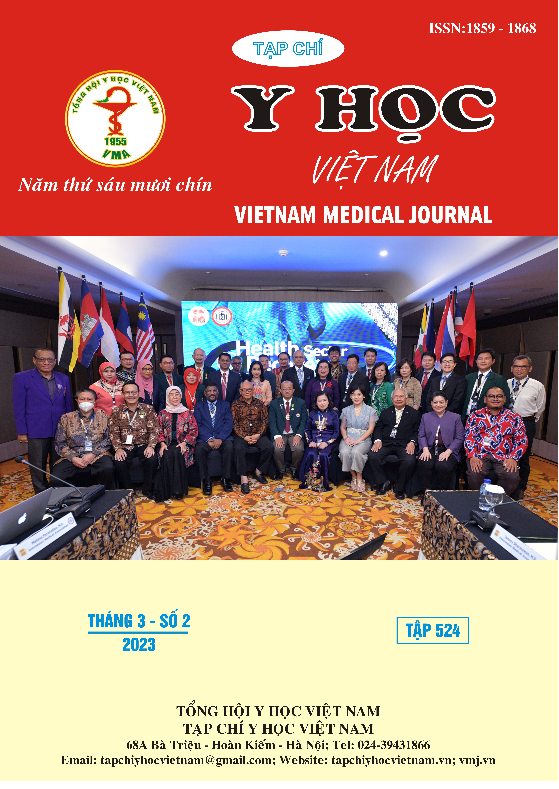PREVALENCE OF HEPATITIS C INFECTION AND ASSOCIATED FACTORS IN TRA VINH PROVINCE
Main Article Content
Abstract
Background: Hepatitis C vi rút infection has also been a public health issue in various countries and Vietnam. This study promises to make evidence-based health policy and other particular preventive strategies. Objectives: To identify the prevalence of hepatitis C vi rút infection and its associated factors among the population aged 15 to 65 in Tra Vinh province. Materials and methods: The cross-sectional study was conducted on a population living in Tra Vinh province using representative sampling and the HCV antibody test. Results: The proportion of HCV infection was 1,01%, and the associated factors included the history of abscess incision or skin suture and sharing razors. Conclusion: This study's magnitude of HCV infection estimation is lower than near geographical areas but equivalent to the national report, which was around 1,0%. The exposure or behaviors related to HCV infection could be prevented by health communication and by reducing the risk of exposure to the vi rút in healthcare settings.
Article Details
Keywords
HCV, associated factors, Tra Vinh province.
References
2. Bennett H, Waser N, Johnston K, and et al. (2015), "A review of the burden of hepatitis C vi rút infection in China, Japan, South Korea and Taiwan", Hepatol Int, 9 (3), pp. 378-390.
3. Do SH, Yamada H, Fujimoto M, and et al. (2015), "High prevalences of hepatitis B and C vi rút infections among adults living in Binh Thuan province, Vietnam", Hepatol Res, 45 (3), pp. 259-268.
4. Hagan LM, Kasradze Ana, Salyer Stephanie J, and et al. (2019), "Hepatitis C prevalence and risk factors in Georgia, 2015: setting a baseline for elimination", BMC Public Health, 19 (3), pp. 480.
5. Huiban L, Stanciu C, Muzica CM, and et al. (2021), "Hepatitis C Vi rút Prevalence and Risk Factors in a Village in Northeastern Romania-A Population-Based Screening-The First Step to Viral Micro-Elimination", Healthcare (Basel), 9 (6), pp. 651.
6. Kim TV, Le DH, Dao Diem VB, and et al. (2022), "Demonstration of a population-based HCV serosurvey in Ho Chi Minh City, Viet Nam: Establishing baseline prevalence of and continuum of care for HCV micro-elimination by 2030", The Lancet Regional Health – Western Pacific, 27, e100524.
7. Mooren Kevin J, Gauri Aliyah, Koru-Sengul Tulay (2019), "Prevalence and sociodemographic disparities of Hepatitis C in Baby Boomers and the US adult population", Journal of Infection and Public Health, 12 (1), pp. 32-36.
8. Nguyen VT, McLaws ML, Dore GJ (2007), "Prevalence and risk factors for hepatitis C infection in rural north Vietnam", Hepatol Int, 1 (3), pp. 387-393.
9. World Health Organization, Hepatitis C, Available at: https://www.who.int/news-room/fact-sheets/detail/hepatitis-c, 30 November.


